Author: Steve Thanos
Barley may be the most common grain used to make beer, but it’s certainly not the only one. For centuries, brewers have been using oats in the form of oatmeal in a range of styles not only to impart a unique grainy flavor, but as a means of achieving a silky mouthfeel and dense foam, which is due to the high beta glucan content of oats. A style that features this ubiquitous cereal grain is Oatmeal Stout, a dark ale that’s known for its creamy texture and cookie-like flavor that’s balanced by a notable roast character.
While flaked oats are seemingly the most common used to make beer, many brewers rely on other types of oats, some of which can be found on grocery store shelves. Similar in appearance to flaked oats, rolled oats, also known as old fashioned oats, are created by steaming de-husked whole oats then running them through a roller to flatten them. Another option that’s popular among breakfast enthusiasts are quick oats, which are essentially rolled oats, albeit slightly thinner, that get cut up to create more surface area to reduce cooking time.
I’m a big fan of brewing with oats and have tended to use with quick oats based on recommendations I read online claiming their smaller size makes the starches more readily accessible. Curious if this matter, I designed an xBmt to compare old fashioned oats to quick oats in a style where oats are a hallmark – Oatmeal Stout.
| PURPOSE |
To evaluate the differences between an Oatmeal Stout made with old fashioned oats and one made with quick oats.
| METHODS |
For this xBmt, I went with a simple Oatmeal Stout recipe with both batches containing identical amounts of either old fashioned oats or quick oats.
Preludes To…
Recipe Details
| Batch Size | Boil Time | IBU | SRM | Est. OG | Est. FG | ABV |
|---|---|---|---|---|---|---|
| 5.5 gal | 60 min | 38.6 | 38.5 SRM | 1.058 | 1.015 | 5.64 % |
| Actuals | 1.058 | 1.015 | 5.64 % | |||
Fermentables
| Name | Amount | % |
|---|---|---|
| Pale Ale Malt 2-Row | 7.5 lbs | 68.97 |
| Old Fashioned OR Quick Oats | 1.125 lbs | 10.35 |
| Munich | 1 lbs | 9.2 |
| Chocolate Malt | 8 oz | 4.6 |
| Roasted Barley | 8 oz | 4.6 |
| Black Malt | 3.99 oz | 2.29 |
Hops
| Name | Amount | Time | Use | Form | Alpha % |
|---|---|---|---|---|---|
| Magnum | 28 g | 60 min | Boil | Pellet | 12 |
Yeast
| Name | Lab | Attenuation | Temperature |
|---|---|---|---|
| Darkness (A10) | Imperial Yeast | 75% | 32°F - 32°F |
Notes
| Water Profile: Ca 55 l Mg 12 l Na 9 l SO4 48 l Cl 35 |
Download
| Download this recipe's BeerXML file |
After collecting 2 sets of water and lighting the flame to get them heating up, I weighed out and milled the grains, setting aside the different types of oatmeal to be added post-milling.
Once the water for each batch was adequately heated, I incorporated the grains then checked to make sure both were at the same target mash temperature.
While the mashes were resting, I prepared the kettle hop additions.
Once each 60 minute mashes was complete, I removed the grains and boiled each wort for 60 minutes before quickly chilling them with my JaDeD Brewing Hydra IC then transferring identical volumes to separate fermeneters. Refractometer readings showed both worts achieved the same target OG
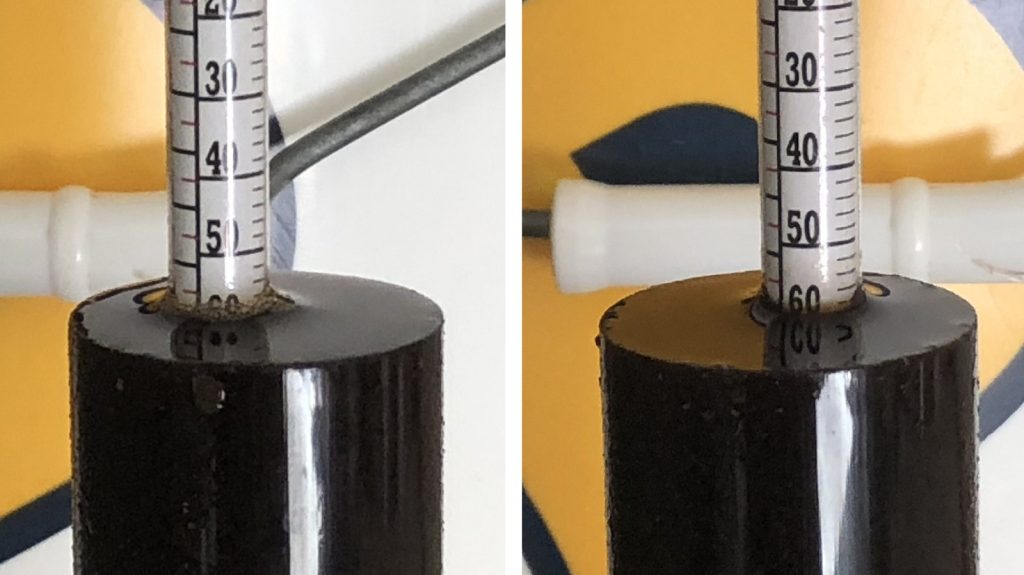
At this point, I pitched a pouch of Imperial Yeast A10 Darkness into each batch then placed the filled fermenters in my chamber controlled to 68°F/20°C.
With signs of fermentation activity absent after 3 weeks, I took hydrometer measurements showing the beer made with old fashioned oats finished slightly higher than the one made with quick oats.
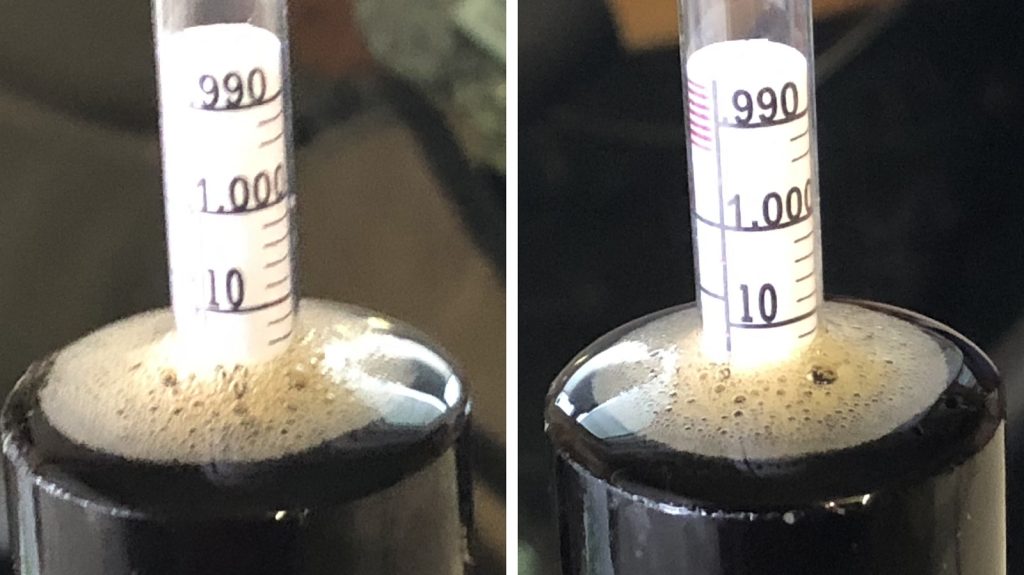
The beers were transferred to CO2 purged kegs and placed in my keezer where they were left to condition for a couple weeks before they were ready to serve.
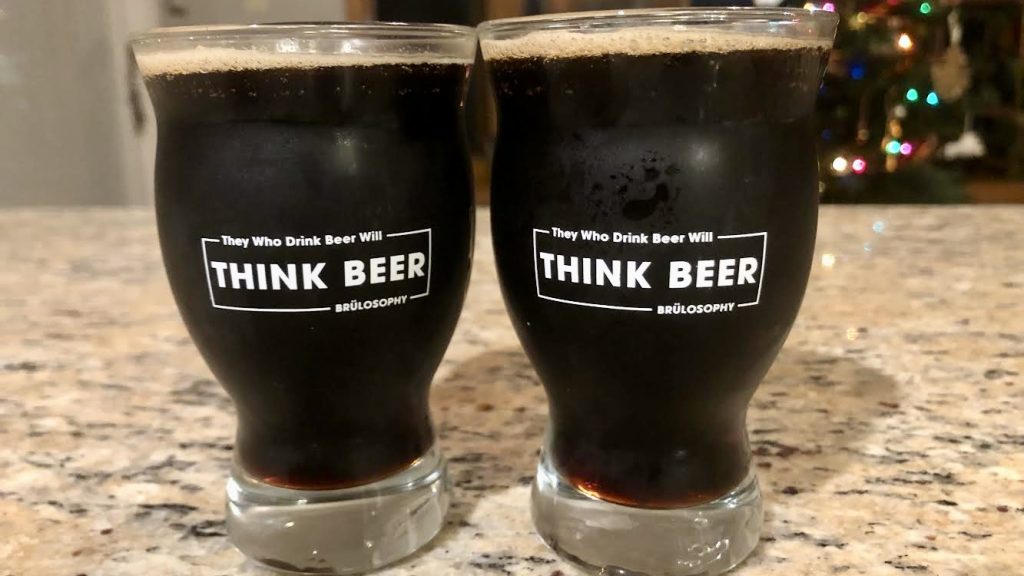
| RESULTS |
Huge thanks to the fine folks at Werk Force Brewing Company and the members of the Plainfield Ale and Lager Enthusiasts (PALE) homebrew club for helping me with data collection for this xBmt. A total of 26 people of varying levels of experience participated in this xBmt. Each participant was served 1 sample of the beer made with old fashioned oats and 2 samples of the beer made with quick oats in different colored opaque cups then asked to identify the unique sample. While 14 tasters (p<0.05) would have had to accurately identify the unique sample in order to reach statistical significance, 10 did (p=0.36), indicating participants in this xBmt were unable to reliably distinguish an Oatmeal Stout made with old fashioned oats from one made with quick oats.
My Impressions: Out of the 5 semi-blind triangle tests I attempted, I correctly identified the odd-beer-out just once, and that was a lucky guess. I perceived these beers as being identical in every way, both possessing a nice grainy flavor and creamy texture that complimented the roast in this tasty Oatmeal Stout.
| DISCUSSION |
Generally viewed as an adjunct grain, oats have been a common brewing ingredient for as long as beer has been a thing, and these it’s typically used along with barley malt to enhance body, mouthfeel, and foam while contributing a unique grainy flavor. Two of the common forms oats come in are rolled, or old fashioned, and quick, with some claiming they impart different perceptible qualities to beer. Countering this claim, tasters in this xBmt were unable to reliably distinguish an Oatmeal Stout made with old fashioned oats from one made with quick oats.
Each of the beers in this xBmt contained 10% of either old fashioned oats or quick oats, and while that’s a commonly used amount for Oatmeal Stout, it’s possible a larger portion would have led to more noticeable difference. A more plausible explanation for these results is that old fashioned oats and quick oats simply contribute similar characteristics when used in beer. Occam’s razor.
As someone who has tended to use quick oats due to a suggestion I received soon after I started homebrewing, these results were quite surprising, as they suggest old fashioned oats can be used with a similar outcome. I’m now interested in doing further xBmts comparing these two common oatmeal options with flaked oats and even steel cut oats, which I understand requires a cereal mash. Until then, my decision will be based on whatever happens to be cheapest at the grocery store when I’m shopping for an upcoming brew day.
If you have any thoughts about this xBmt, please do not hesitate to share in the comments section below!
Support Brülosophy In Style!
All designs are available in various colors and sizes on Amazon!
Follow Brülosophy on:
FACEBOOK | TWITTER | INSTAGRAM
If you enjoy this stuff and feel compelled to support Brulosophy.com, please check out the Support page for details on how you can very easily do so. Thanks!


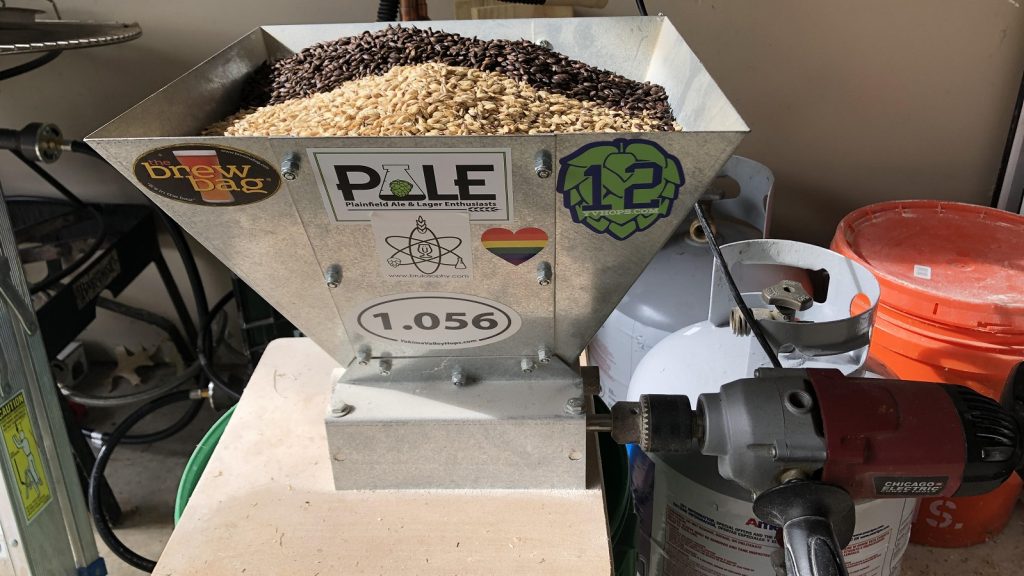
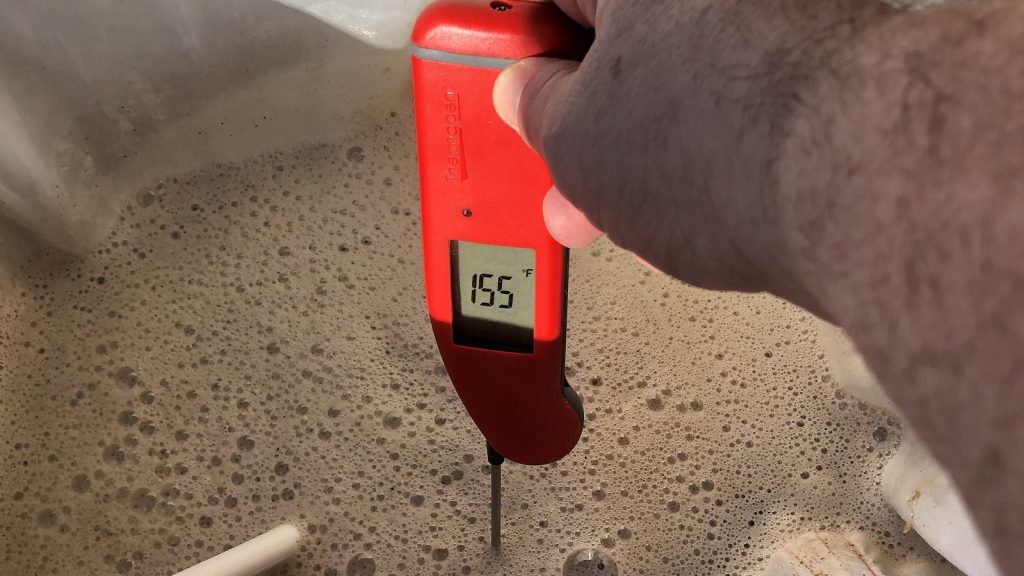
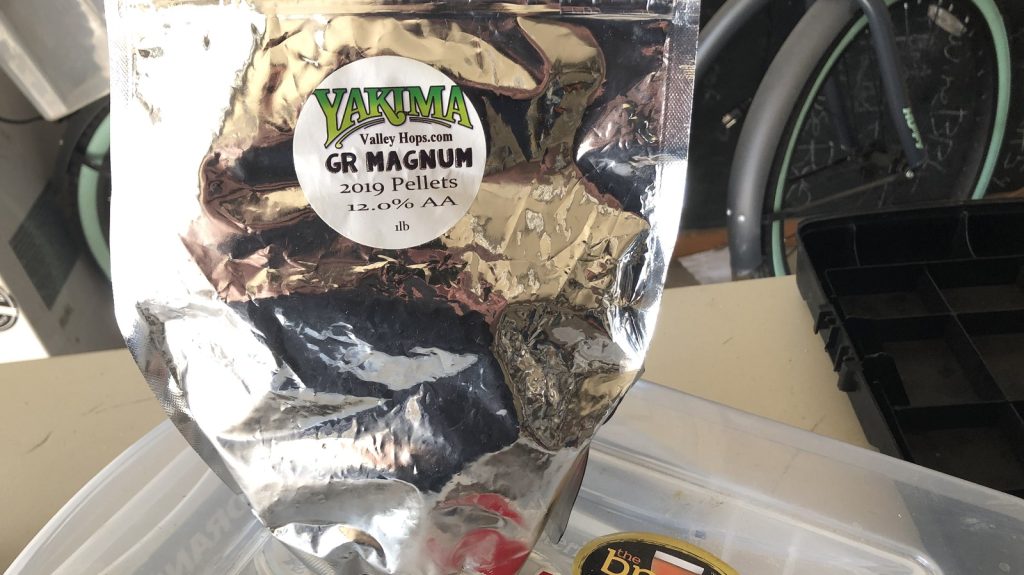
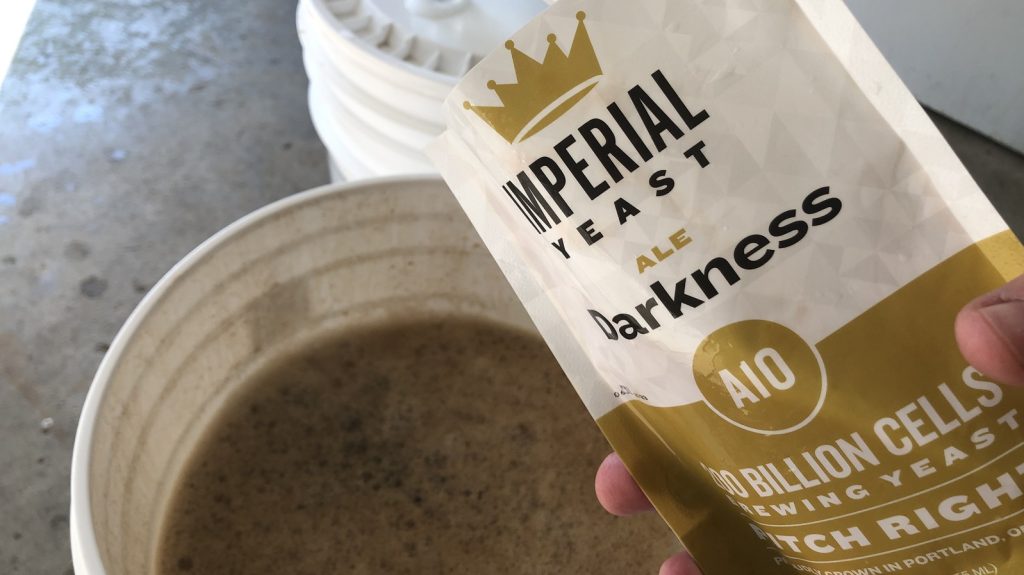











6 thoughts on “exBEERiment | Grain Comparison: Old Fashioned Oats vs. Quick Oats In An Oatmeal Stout”
Interesting, thank you. Next time you might try comparing any type of oats to none at all. After many years of trial and error, I’ve come to the reluctant conclusion that the only thing oats contribute is a slow run-off. I believe the purported “creamy mouthfeel” is more homebrewer wive’s tale than anything else. Why would it have been included originally in commercial recipes? Like the flaked barley in Guinness, I suspect more for economic reasons than anything else, unmalted grains costing less than malted.
For reference, here’s an exbeeriment comparing a hazy IPA with 18% flaked oats to one without. Even with such a high percentage, and without a bunch of other adjuncts to get in the way, people couldn’t tell the difference.
https://brulosophy.com/2016/11/21/the-impact-of-flaked-oats-on-new-england-ipa-exbeeriment-results/
This exbeeriment leads me to wonder: could I tell the difference between old-fashioned and quick rolled oats in my breakfast oatmeal?
Very likely. You can see a noticeable difference in them when uncooked. Old fashioned oats have a darker golden color. Quick oats are also cut into smaller pieces so they cook faster. There will be a different mouthfeel between them – old fashioned will be noticeably chewier. Tastewise, old fashion oats will likely have a stronger oat flavor.
Seems like a great beer! The only thing is that based on the experiment design, you probably could have predicted that result. At just 10%, that’s barely any oats for even a regular beer and definitely low for an “oatmeal” stout. I mean isn’t it kind of weird to call it an oatmeal stout with only 10%? Do you call a Guinness clone a flaked barley stout? I realize there are recipes out there that have a similar level of oats, but at that level it seems like it’s mostly just to be able to say it has oatmeal – just for the clout 😂.
Coincidentally, the Basic Brewing Radio episode from last week was about designing an oatmeal stout. They talked about how traditional examples can have 50% oats or even more.
One thing I heard from Bell’s a while ago is that for alternative grains, you need at least a third of your grist to be that grain (in that case rye) if you want any chance of tasting it.
Like another commenter noted, if there was already Brulosophy data showing tasters couldn’t distinguish 18% oats in an even less complicated malt bill, why go with even less for this experiment especially since this is testing an even more subtle characteristic? In other words, we would already expect that tasters wouldn’t even notice 10% oats in a recipe, so why test a nuance in particle size of oats in an amount that is already likely below the perception threshold? Just seems like kind of a missed opportunity? 🤷
I agree with other comments that note a higher percentage of oats would be informative. The steel cut oats comparison would also be interesting to me – I’ve often wondered about this one.
Appreciate this experiment though! Thank you for sharing.
Maybe oats versus rye flakes??